Teacher and ICT coordinator Lee Parkinson explains how popular games such as Temple Run can actually be used as a disguised method of learning, rather than a simple incentive, hence the term 'camouflaged learning'. With so many aspects of maths, English and science already incorporated within games (scores, coins, trajectory, gravity, words) and a huge potential for post-play learning to be done with numbers, vocabulary, concepts etc., teachers can potentially use any game as a learning tool.
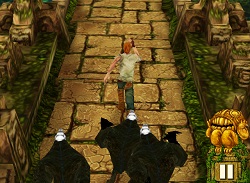
I have found I use iPads in two major ways within the classroom: as a tool to engage and as a tool to create.
In most of the projects I have completed with the children this year, I have tried to combine both these elements to get the best work from the children. Firstly, using the iPad to provide a focus to use in lessons has had a massive impact as far as engaging children, motivating them and leading them into a 'false sense of learning'.
The idea that children are learning by doing activities where they feel they are 'playing' is something I am always trying to promote. It is the perfect way to get disengaged or reluctant learners on board and almost trick them into writing, reading and solving problems. Nothing sums this phrase up more than the work produced by children when the focus has been the iPad games they are obsessed with - Angry Birds and Temple Run.
Photo credit: Themeplus
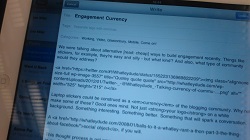
iPads are light, have great battery life and are ultra-portable, meaning that those of you who are tired of opening and starting up your PC, laptop or notebook to write a blog have a quick and easy means of doing so.
And with blogging on-the-go becoming increasingly popular with iPad owners, it is important that people have an app that they feel comfortable with.
We scour and sort through the mass of blogging apps to bring teachers the best ones that are easy to navigate, have great support and are rich with useful features.
Nine months after his school introduced iPads to the eager hands of pupils and a few not-so-eager teachers, Matt Britland offers us a rare insight into how effective their implementation has been in an evaluative study which incorporates the opinions of both teachers and students. We really like how the easily-digestable data is displayed visually, and the depth of the information provided in the project outlines, which is tailored to each subject. The actual report is in a PDF document which you can download here.
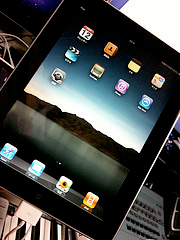
Back in September we began an iPad trial. I have finally written my report.
The report includes the following sections:
Click the 'Read More' button below to download the report from Matt's blog.
Photo credit: Tsubaki Kaworu
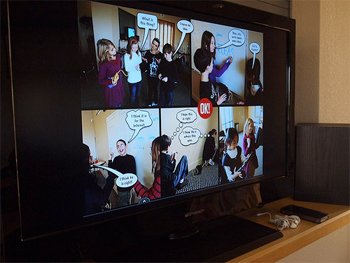
Interested in finding out how easy it is to use your iPad as a digital whiteboard?
As our experience and confidence in using the iPad in the education sector expands, using your iPad as a digital whiteboard may seem obvious. But whether you’re a confident Apple educator or just getting started, you might be unsure about how best to go about it.
Perhaps you want to broadcast a tutorial or e-learning resource to your students or maybe create a collaborative task that can be viewed by the whole class. I’ve trawled the app store, and reviewed some of the most highly-rated whiteboard applications and recommended our favourites. I’ve also provided a short set-up and installation guide to help you connect your iPad and project or TV.
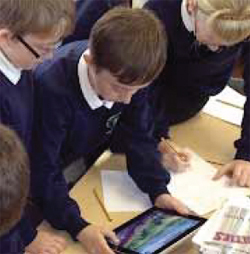
This article originally appeared in the September 2012 Innovate My School magazine.
The iPad is perhaps the most talked-about piece of technology in teaching. Enthralled by tales of educational potential and egged-on by technophile staff, head teachers might be forgiven for investing in the trendy tablets without fully considering how they should be used.
Google Earth is certainly good for familiarising children with foreign geography. Socrative provides a quick way to gauge a class’s progress. The Numbers app enables pupils to produce spreadsheets and graphs, and the Math Bingo game can help them learn arithmetic.
But these programs (or very similar ones) are available on any computer with internet access.
The point is that for many tasks - including essay writing and accessing information - iPads are probably no better than desktops or laptops. Lacking a keyboard, they may even be considered inferior for some purposes. And are the mathematical benefits of Math Bingo really best realised when every pupil in the class is playing the game on a separate device?
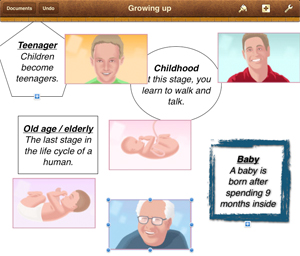
Many of my posts look at ways to use the iPads in Literacy and Numeracy to enhance learning and engage, motivate and inspire children. But how can using the iPad also help children in other subjects like Science, History or Geography?
Here are some ideas about how using the iPad can help students to show, share and develop their learning in these subjects, with a distinct focus on Science.
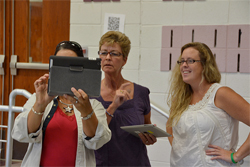
There is a real danger that iPads are going to be the latest in a long line of products that schools have purchased more because of their marketing impact than their educational use.
Grown-ups love iPads, which means parents love iPads. Parents love the idea of having had an iPad at school. Parents are undoubtedly taken in by the iPad-loving school: "The British School in Paris Prep School has issued iPads to every pupil from age 3! what a forward-looking school!" So, let's buy some iPads! Parents will love them!
A word of caution: we've been here before.
Photo credit: kjarrett
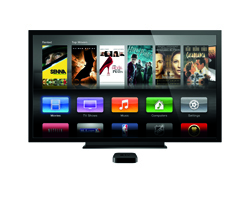
There has been a great discussion forum within our school system about iPads, Interactive Whiteboards (IWBs) and sharing student's work. It started with a question from a teacher just wanting to connect their iPad to the IWB. What then followed was an in-depth discussion about classroom practice and workflows.
We have all spent time and energy creating resources for our IWB, but is it time we move to new technology? We can in fact connect our iPads to an IWB via the VGA Adaptor, but would you choose to if you had other options?
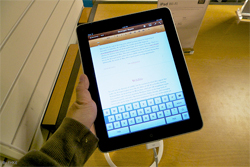
Below you will find all of my iPad 100 posts covering everything you will need to know when investing in iPads for your school.
iPad in schools 101 – In the beginning http://buff.ly/TNmYa1
iPad in schools 102 – Why iPad? http://buff.ly/ZjYmuD
iPad in schools 103 – THE device http://buff.ly/TNnbdB
iPad in schools 104 – THE learning http://buff.ly/ZjYH0r
iPad in schools 105 – Workflow – How to save, work with multiple apps and share http://buff.ly/ZjYQkr
iPad in schools 106 – The importance of your infrastructure http://buff.ly/ZjYXwh
iPad in schools 107 – Why trialling is important http://buff.ly/TNnxRj
iPad in schools 108 – The importance of training & staff http://buff.ly/TNnF3o
iPad in schools 109 – Ways in which mirroring can take place http://buff.ly/TNnPYx
iPad in schools 110 – Stakeholders http://buff.ly/TNo31z
Photo credit: FHKE
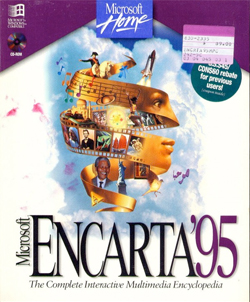
Are iPads the latest big thing that will transform education, or yet another over-hyped technology that will be misused until the next big thing comes along?
Computers in the late 80s were going to change everything, but then we realised they couldn’t do very much that was really different. In the 90s, CDs with encyclopedias such as Encarta appeared which were going to kill the textbook, but that never really happened.
Microsoft put out the Where do you want to go today? adverts in the 90s, but we didn’t really seem to go anywhere.
Interactive whiteboards were the next big thing, with England particularly keen to adopt. Used well they can be highly effective, but the majority are used as little more than a white blackboard.

A community-driven platform for showcasing the latest innovations and voices in schools
Pioneer House
North Road
Ellesmere Port
CH65 1AD
United Kingdom